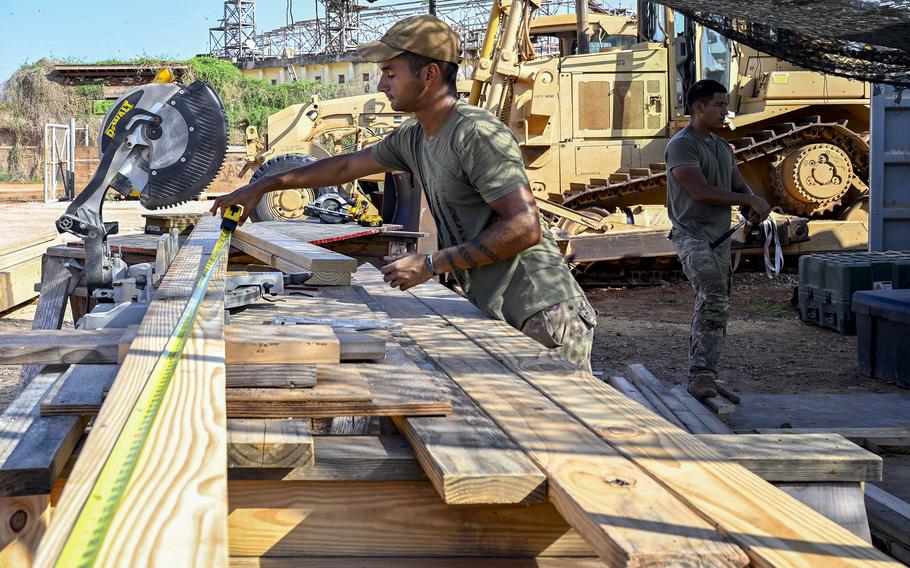
U.S. Army Sgt. Liam Harris, a Combined Joint Task Force–Horn of Africa engineer, measures a board for a new aid station at Baledogle airfield in Somalia on April 25, 2025. (Micheala Maldonado/U.S. Army)
STUTTGART, Germany — A new medical facility is among the recent improvements at a remote U.S. military airfield in Somalia that also is being fortified following heavy attacks in recent years.
The medical aid station at Baledogle Military Airfield will ensure that troops can receive lifesaving care without delay, Combined Joint Task Force-Horn of Africa said in a statement Tuesday.
The added medical capability, along with other housing and force protection projects, further develops the airfield “as an enduring location,” the statement said.
The engineering work at Baledogle suggests that there are no immediate plans for a U.S. withdrawal from Somalia, where several hundred American troops are assisting government forces.
Military officials said the work at Baledogle includes unspecified force protection improvements.
The New York National Guard’s 152nd Engineer Support Company has been playing a “pivotal role in enhancing both military operations and the quality of life for service members” stationed at the airfield, according to the task force.
“Any time there is an operation, (troops) need a place to sleep, to eat, to have security, and that’s what we provide,” a 152nd sergeant said in the statement. “We are the bedrock.”
U.S. special operations troops have used Baledogle off and on for years. The site in southeastern Somalia has played a key role in coordinating counterterrorism efforts aimed at weakening al-Shabab, a militant group aligned with al-Qaida that is locked in a longtime struggle with the Somali central government.
The airfield and the American troops there have been targets for militants. In 2019, al-Shabab launched the largest attack against U.S. forces in Somalia since 1993’s Operation Gothic Serpent.
The 2019 attack resulted in an hourlong shootout, U.S. military officials later said. The militants attempted to break into the base with a truck bomb, which exploded at the location’s perimeter. The blast was so powerful it left a crater 20 feet deep.
It’s not clear what the future direction of the AFRICOM mission in Somalia will be. Defense Secretary Pete Hegseth is assessing how U.S. forces are deployed around the world, which could have implications for U.S. Africa Command.
At the end of President Donald Trump’s first term, he pulled all U.S. forces out of the country, promoting AFRICOM to carry out rotational missions there instead. In 2022, AFRICOM returned to a full-time presence in Somalia.